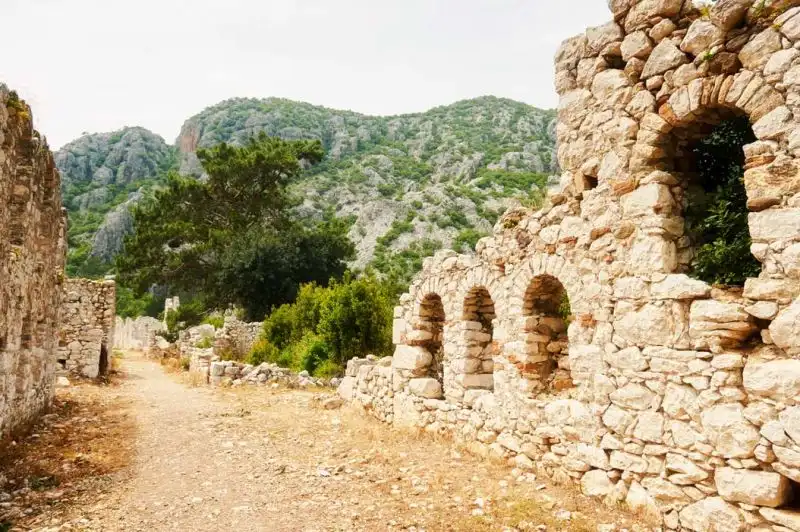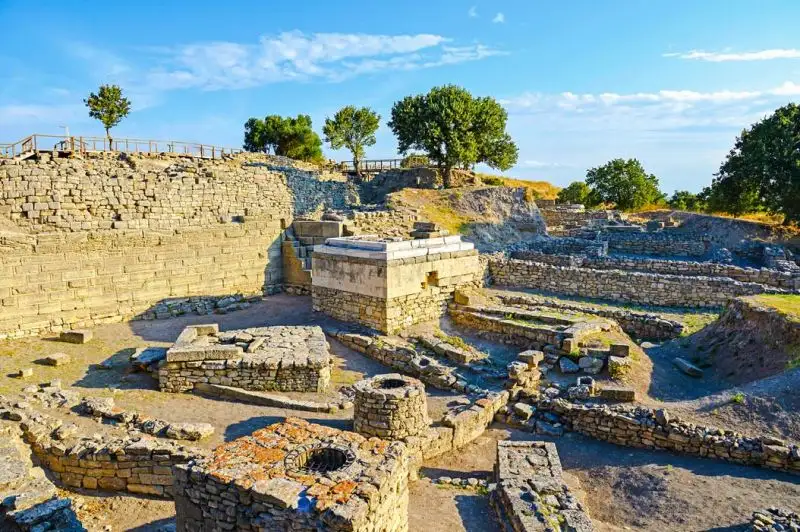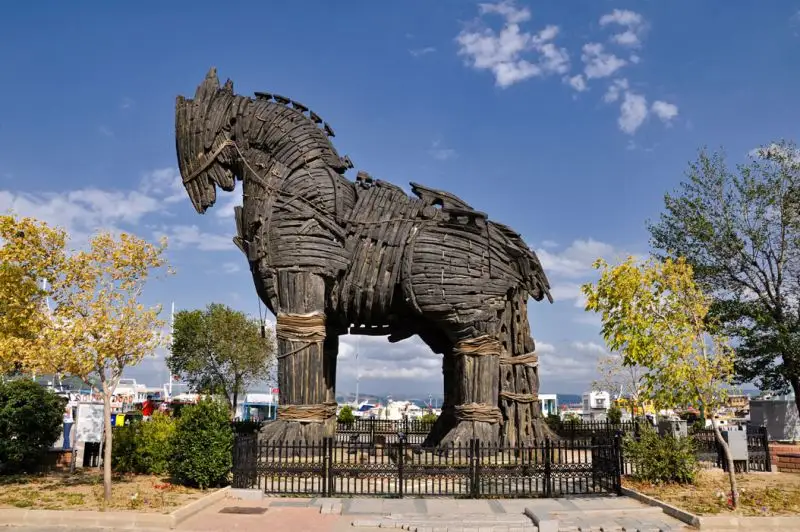Troy of Turkey
.jpg)
Troy is an ancient city located in the heart of nature in province Çanakkale, northwestern Turkey. Troy is one of the richest cities of ancient times. It was made famous in Homer’s epic poem, the Iliad. According to Homer’s Iliad, this is where the legendary Trojan War took place. Today, Troy is an archaeological site which is popular with travellers from all over the world. In addition to it being a Turkish national park, it is on the UNESCO World Heritage List. The modern day Turkish name for the site of Troy is Hisarlik.
The City’s Origin
Imagine standing atop a hill where legends and reality intertwine, where each layer of earth whispers tales of bygone civilizations. This is Hisarlik, the site long identified as the legendary Troy of Homer's epics. Archaeological excavations have peeled back the veil of time, revealing a mesmerizing tapestry of human habitation spanning nearly four millennia, beginning around 3000 B.C. Picture a phoenix rising from its ashes, for Troy was not just one city, but many – each new incarnation built upon the ruins of its predecessor. Walking these ancient grounds, you tread upon layer after layer of human perseverance and ingenuity. From humble Bronze Age settlements to grand Hellenistic cities, each stratum tells a story of triumph, destruction, and rebirth. Hisarlik stands as a testament to the enduring spirit of humanity, a place where myth and history dance in eternal embrace.

The Legend of Troy
Picture a city shrouded in mist, its walls echoing with the clash of bronze and the cries of heroes. This is Troy, a name that conjures images of both legend and reality, where the threads of myth and history intertwine in a tapestry as old as time itself. In the realm of legend, Troy stands as an impregnable fortress, besieged for a decade by a Greek army led by the ambitious King Agamemnon. The epic tale of the Trojan War, immortalized in Homer's Iliad, speaks of love, honor, and the folly of pride.
Imagine yourself transported to the late Bronze Age, around 1200 B.C., when the Mycenaean civilization flourished in Greece, erecting grand palaces and mastering the art of writing. It was in this era of heroes that Paris, son of Troy's King Priam, sparked a conflict that would echo through millennia by abducting Helen, the captivating queen of Sparta. This single act of passion unleashed a storm of vengeance that would see a thousand ships launched and countless lives lost.
As you walk the sun-baked hills of modern-day Turkey, you can almost hear the whispers of ancient warriors and the laments of fallen kings. For here, amidst the ruins of Hisarlik, archaeologists have unearthed layer upon layer of history, each stratum telling a tale of destruction and rebirth. The Troy of legend may be elusive, but the Troy of history stands as a testament to human perseverance, a place where the boundaries between myth and reality blur, inviting us to lose ourselves in the mists of time.
Visit Troy of Turkey and other places with our Turkey Travel Packages!

Customize Your Dream Vacation!
Get in touch with our local experts for an unforgettable journey.
Plan Your TripTrojan Horse
As you approach the ancient site of Troy, your eyes are drawn to an awe-inspiring sight: a towering wooden horse standing sentinel at the entrance. This reconstructed marvel isn't just a photo opportunity; it's a gateway to one of history's most captivating tales. Close your eyes and let your imagination transport you back to the final days of the Trojan War, where myth and history dance in an eternal embrace.
Picture the scene: after a decade of fruitless siege, the cunning Greeks craft a colossal wooden horse, its hollow belly concealing a select force of their bravest warriors. As the Greek ships seemingly sail away, the Trojans rejoice, believing the long war has finally ended. The horse, left as a parting gift, stands before Troy's impenetrable gates – a trophy too tempting to resist.
With triumphant cheers, the Trojans drag their prize into the city, unaware of the fate they've sealed. As night falls and revelry echoes through Troy's streets, shadowy figures emerge from the horse's hidden compartment. Silently, they make their way to the gates, throwing them open to welcome the returned Greek army.
This legendary tale of ingenuity and deception has captivated imaginations for millennia. As you stand before the reconstructed horse, you can almost hear the whispers of ancient warriors and the creaking of wooden wheels. It's a testament to the enduring power of storytelling and the blurred lines between myth and history that make Troy an unforgettable destination.

What to See and Do at Troy
Some thinks that there is not a lot to do there and that to some extent is true compared to other ancient cities in Turkey such as Pergamum, Ephesus, and Aphrodisias. However, the thrill of just seeing the ancient walls of Troy and climbing around its ruins, and gazing across the Troad towards the waters of the Dardanelles and the hills of Gallipoli is an indescribable experience.

Getting There
You can make a great and long day trip from Istanbul to Troy by hiring a car in Istanbul. Whether you choose to hire a car and chart your course through Turkey's picturesque landscapes or opt for the convenience of regular coach services from Istanbul's bus stations to Çanakkale, a day trip to Troy promises to transport you through millennia of history and myth.
Take a journey to ancient times and see firsthand the story of Homer’s Iliad at Troy in a day tour from Istanbul through one of our Turkey Travel Packages!
Troy is located in Çanakkale Province in northwest Turkey, approximately 30km southwest of Çanakkale city, easily accessible by car or guided tour from Istanbul.
Key sites include the famous Trojan Horse replica, the ancient city walls dating back to 3000 BC, the Roman-era Odeon theater, and the Temple of Athena showcasing multiple settlement layers.
Spring (April-May) and autumn (September-October) offer ideal weather conditions with moderate temperatures and fewer crowds for exploring the outdoor archaeological site comfortably.



















